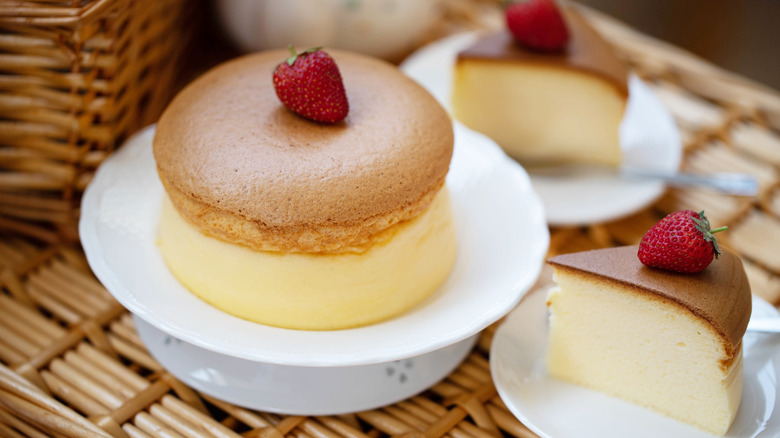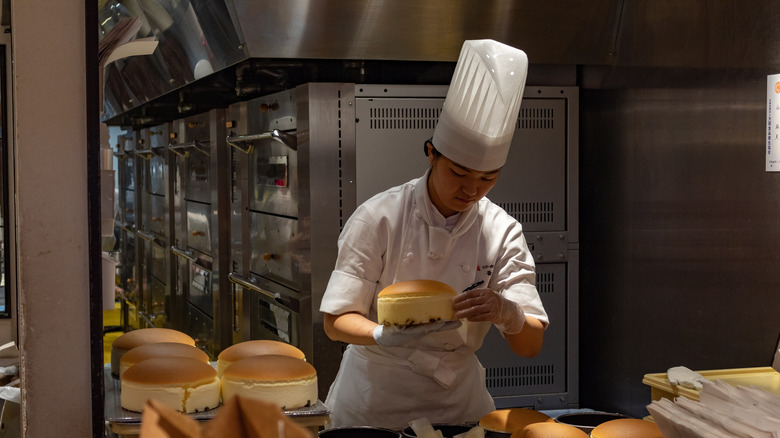The German Inspiration Behind Japan's Famous Soufflé Cheesecake
When you think of Japanese food, cheesecake might not be the first thing that comes to mind, but Japanese-style cheesecake is a unique take on the beloved dessert and it's growing in popularity worldwide. The dessert tends to take a minimalist approach, especially compared to the decadent chocolate and caramel creations Americans might know from the Cheesecake Factory. Even compared to subtler European counterparts, Japanese cheesecakes have a subdued flavor. The real draw is the texture. Sometimes known as soufflé cheesecakes, Japanese cheesecakes have an extraordinarily light texture — a refreshing alternative for anyone who finds traditional cheesecakes too dense.
The first Japanese recipe for cheesecake appeared in 1873, but it wasn't until the 1970s that it took off. On a 1969 trip to Germany, Tomotaro Kuzuno (president of Japanese confectionary chain Morozoff) fell in love with a type of German cheesecake called käsekuchen. German cakes get their texture from whipping egg whites separately, a technique that provides a fluffier result than you'd find in an American cheesecake. Kuzuno was inspired to bring the cakes to Japan and, over time, he honed his technique. Like German cheesecake, Japanese cheesecakes get their characteristic texture from whipped egg whites, but Kuzuno's recipe used cream cheese instead of quark, the soft cheese used in German cakes. The swap was inspired by American cooks, who'd started using cream cheese in the 1920s and 30s.
Adapting western cheesecakes for Japanese palates
Before the 1930s, American cooks used more traditional types of cheese for cheesecake, like cheese curds. In the 1920s, manufacturers introduced ultra-creamy cream cheese that was stable enough to withstand heat without breaking down. Cream cheese produced a smoother texture than traditional cheeses, and American cooks quickly adopted the ingredient. By combining the techniques, Kuzuno was able to produce an ultra-fluffy, ultra-smooth cake that was perfect for Japanese tastes.
Japanese cheesecake is part of a long tradition of Japanese chefs adopting and adapting western-style desserts to Japanese tastes. Many of these desserts — like shortcake, soufflé pancakes, and swiss rolls — focus on amping up the fluffy texture. In Japanese, a language full of imaginative onomatopoeia, this texture is called fuwa-fuwa, and it's what makes Japanese cheesecake so unique.
While Japanese cheesecake is more laborious than traditional cheesecakes, Kuzuno's cake was a hit. In Japan, cheesecakes started popping up on bakery shelves and recipes appeared in magazines. Now, souffle cheesecakes are available throughout Japan but, thanks to the cake's popularity, you don't have to book a trip to get a taste. Check your local bakery; you can even find Japanese Cheesecakes at Trader Joe's.

